Free Trade Agreements for Indian Exports & Imports
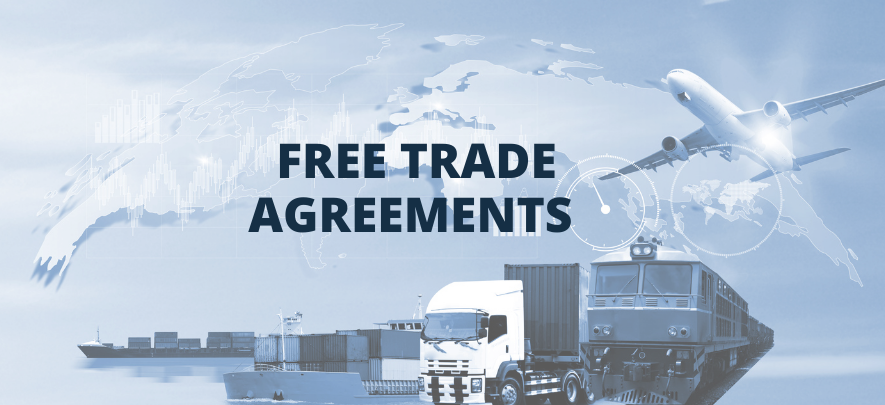
Export Sector
Federation of Indian Export Organisations
158 week ago — 29 min read
In our previous articles we discussed how to start an export business, general provisions regarding export and import, Reserve Bank of India (RBI) regulations for exporters, all about GST under exports, E-way Bill, RoDTEP Scheme and Duty Exemption & Remission Scheme. In this article we will address frequently asked questions regarding Free Trade Agreements for Indian Exports & Imports.
Q. What are Free Trade Agreements (FTAs)?
FTAs are arrangements between two or more countries or trading blocs that primarily agree to reduce or eliminate customs tariff and non tariff barriers on substantial trade between them. FTAs, normally cover trade in goods (such as agricultural or industrial products) or trade in services (such as banking, construction, trading etc.). FTAs can also cover other areas such as intellectual property rights (IPRs), investment, government procurement and competition policy, etc.
Q. What is the INDIA-ASEAN trade in good agreement?
The ASEAN-India Trade in Goods Agreement was signed and entered into force on 1 January 2010. Under the Agreement, ASEAN Member States and India have agreed to open their respective markets by progressively reducing and eliminating duties on 76.4% coverage of good. The ASEAN-India Trade in Services Agreement was signed in November 2014. It contains provisions on transparency, domestic regulations, recognition, market access, national treatment and dispute settlement.
The ASEAN-India Investment Agreement was also signed in November 2014. The Investment Agreement stipulates protection of investment to ensure fair and equitable treatment for investors, non-discriminatory treatment in expropriation or nationalisation as well as fair compensation.
Economic co-operation activities under the AIFTA are now being undertaken on agriculture, fisheries and forestry; services; mining and energy; science and technology; transport and infrastructure; manufacturing; human resource development; and other sectors such as handicrafts, small and medium enterprises (SMEs), competition policy, Mekong Basin Development, intellectual property rights and government procurement.
Q. What is the relationship between Multilateralism (WTO) and FTAs?
Article 1 of GATT (General Agreement on Tariffs and Trade) which enunciates the most favoured nation (MFN) principle of WTO states that "any advantage, favour, privilege, or immunity granted by any contracting party to any product originating in or destined for any other country shall be accorded immediately and unconditionally to the like product originating in or destined for the territories of all other contracting parties."
However, derogations from this MFN principle are permitted for forming FTAs under specific conditions as per the following provisions of the WTO Agreements:
• Article XXIV of GATT for goods
• Article V of GATS (General Agreement on Trade in Services) for services.
The specific conditions under Article XXIV of the GATT permitting FTAs, are:
• FTA members shall not erect higher or more restrictive tariff or non-tariff barriers on trade with non-members than existed prior to the formation of the FTA.
• Elimination of tariffs and other trade restrictions be applied to "substantially all the trade between the constituent territories in products originating in such territories."
• Elimination of duties and other trade restrictions on trade within the FTA to be accomplished "within a reasonable length of time," meaning a period of no longer than 10 years
Moreover, the "Enabling Clause", allows developing countries to form preferential trading arrangements without adhering to the conditions under Article XXIV.
Q. What is the difference between the terms such as PTA, CECA, RTA, CEPA, Customs , Common Market and Economic ? How are these related to FTAs?
Preferential Trade Agreement (PTA): In a PTA, two or more partners agree to reduce tariffs on agreed number of tariff lines. The list of products on which the partners agree to reduce duty is called positive list. India MERCOSUR PTA is such an example. However, in general PTAs do not cover substantially all trade.
Free Trade Agreement (FTA): In FTAs, tariffs on items covering substantial bilateral trade are eliminated between the partner countries; however each maintains individual tariff structure for non-members. India Sri Lanka FTA is an example. The keydifference between an FTA and a PTA is that while in a PTA there is a positive list of products on which duty is to be reduced; in an FTA there is a negative list on which duty is not reduced or eliminated. Thus, compared to a PTA, FTAs are generally more ambitious in coverage of tariff lines (products) on which duty is to be reduced.
Comprehensive Economic Cooperation Agreement (CECA) and Comprehensive Economic Partnership Agreement (CEPA): These terms describe agreements which consist of an integrated package on goods, services and investment along with other areas including IPR, competition etc. The India Korea CEPA is one such example and it covers a broad range of other areas like trade facilitation and customs cooperation, investment, competition, IPR etc.
Custom Union: In a Customs union, partner countries may decide to trade at zero duty among themselves, however they maintain common tariffs against rest of the world. An example is Southern African Customs Union (SACU) amongst South Africa, Lesotho, Namibia, Botswana and Swaziland. European Union is also an outstanding example.
Common Market: Integration provided by a Common market is one step deeper than that by a Customs Union. A common market is a Customs Union with provisions to facilitate free movements of labour and capital, harmonize technical standards across members etc. European Common Market is an example.
Economic Union: Economic Union is a Common Market extended through further harmonization of fiscal/monetary policies and shared executive, judicial & legislative institutions. European Union (EU) is an example.
Q. What is an Early Harvest Scheme/Programme (EHS) and how different is it from an FTA?
Early harvest scheme is a precursor to a free trade agreement (FTA) between two trading partners. This is to help the two trading countries to identify certain products for tariff liberalisation pending the conclusion of FTA negotiation. It is primarily a confidence building measure. A good example of an EHS is between India and Thailand signed in October 2003, wherein 83 products were identified to be reduced to zero in a phased manner. The EHS has been used as a mechanism to build greater confidence amongst trading partners to prepare them for even bigger economic engagement.
Q. Which are the major FTAs / PTAs/CEPAs of India?
The major bilateral and regional agreements of India are:

Source: Compiled from Commerce Ministry web site “Trade Agreements” and Srivastava. Ajay, Chapter 27, Free Trade Agreements, Business Impact of WTO, FTAs and other International Trade Issues.
Q. How is tariff reduction under an FTA different from WTO tariff negotiation?
For the purposes of FTAs, the "base rate" is the critical element in all aspects of negotiations/phasing that are carried out. The base rate is the applied MFN duty of any year which is decided mutually. In an FTA tariff reduction is generally undertaken with reference to the base rate i.e. from the applied MFN tariffs. However, the WTO negotiations are always based on "bound duty rates" and not the MFN applied duties.
Q. How is CECA/CEPA different from FTA?
A Comprehensive Economic Cooperation Agreement (CECA) or a Comprehensive Economic Partnership Agreement (CEPA) is different from a traditional Free Trade Agreement (FTA) on two counts.
Firstly, CECA/CEPA are more comprehensive and ambitious that an FTA in terms of coverage of areas and the type of commitments. While a traditional FTA focuses mainly on goods; a CECA/CEPA is more ambitious in terms of a holistic coverage of many areas like services, investment, competition, government procurement, disputes etc.
Secondly, CECA/CEPA looks deeper at the regulatory aspects of trade than an FTA. It is on account of this that it encompasses mutual recognition agreements (MRAs) that covers the regulatory regimes of the partners. An MRA recognises different regulatory regimes of partners on the presumption that they achieve the same end objectives.
Q. Why are almost all the countries signing Free Trade Agreements?
Countries negotiate Free trade Agreements for a number of reasons.
• By eliminating tariffs and some non-tariff barriers FTA partners get easier market access into one another's markets.
• Exporters prefer FTAs to multilateral trade liberalization because they get preferential treatment over non-FTA member country competitors. For example in the case of ASEAN, ASEAN has an FTA with India but not with Canada. ASEAN's custom duty on leather shoes is 20% but under the FTA with India it reduced duties to zero. Now assuming other costs being equal, an Indian exporter, because of this duty preference, will be more competitive than a Canadian exporter of shoes. Secondly, FTAs may also protect local exporters from losing out to foreign companies that might receive preferential treatment under other FTAs.
• Possibility of increased foreign investment from outside the FTA. Consider 2 countries A and B having an FTA. Country A has high tariff and large domestic market. The firms based in country C may decide to invest in country A to cater to A's domestic market. However, once A and B sign an FTA and B offers better business environment, C may decide to locate its plant in B to supply its products to A.
• Such occurrences are not limited to tariffs alone but it is also true in the case of non-tariff measures. Especially when a Mutual Recognition Agreement (MRA) is reached between countries A and B. Some experts are of the view that slow progress in multilateral negotiations due to complexities arising from large number of countries to reach a consensus on polarising issues, may have provided the impetus for FTAs.
Q. How is India placed globally in terms of its bilateral PTAs/FTAs/ CECAs/CEPAs
India has preferential access, economic cooperation and Free Trade Agreements (FTA) with about 54 individual countries. India has signed bilateral trade deals in the form of Comprehensive Economic Partnership Agreement (CEPA)/Comprehensive Economic Cooperation Agreement (CECA)/FTA/Preferential Trade Agreements (PTAs) with some 18 groups/countries. India is a late, and cautious, starter in concluding comprehensive preferential tariff agreements covering substantially all trade with some of its trading partners.
Q. Can one find tariff concessions available in India’s FTAs?
Information on India’s FTAs including the tariff concessions thereof is available in the website of the Department of Commerce at www.commerce.gov.in. Further, a web portal “India’s Trade Compendium” has been developed which provides insights into India’s trade (both MFN and preferential) through the following information:
• Classification of goods at disaggregated HS levels
• Preferential tariffs for India and its FTA partners
• MFN tariffs for India, ASEAN and India’s Top 25 export destinations
• SPS-TBT requirements for India and Top 25 export destinations
• Search Criteria Based on HS Codes and / or Product Names
Q. What are Rules of Origin (ROO)?
Rules of origin (ROO) are the criteria needed to determine the country of origin of a product for purposes of international trade.Their importance is derived from the fact that duties and restrictions in several cases depend upon the source of imports. Rules of origin are used:
• to implement measures and instruments of commercial policy such as anti-dumping duties and safeguard measures;
• to determine whether imported products shall receive most-favoured-nation (MFN) treatment or preferential treatment;
• for the purpose of trade statistics;
• for the application of labelling and marking requirements; and
• for government procurement.
Q. What are some of the criteria used in the rules of origin?
The criteria in the rules of origin sets out specific and detailed conditions on the level of processing that an imported item from a non FTA partner country must undergo in the FTA partner country (or other eligible countries in the region) before being eligible to be called an originating product of a FTA partner country. Some of the common criteria used are
• change in tariff classification (this could be at the tariff chapter, tariff heading or tariff sub heading level)
• regional value addition
• substantial manufacturing or processing by excluding some minimal operations.
Q. Why are rules of Origin important in the FTA context?
The Rules of Origin are important in the context of making an assessment on the application of preferential tariff under an FTA. Hence, without the rules of origin, the preferential tariffs under an FTA cannot be implemented. Moreover, the non-members to the FTA are not provided with the benefit of the preferential tariffs, agreed between the FTA partners.
Q. How are Rules of Origin enforced in an FTA?
The rules of origin are enforced through a certificate of origin that is issued by authorised agencies of the trading partner. An exporter cannot avail of the customs tariff preferences under the FTA without submitting this certificate of origin from the authorised agency.
Q. Who are the authorised agencies in India for issuing the certificate of origin?
List of Agencies Authorized to issue Certificate of Origin [Preferential]
Q. What is the procedure for obtaining the certificate of origin?
The exporters would need to apply to the authorised agencies for issuance of the certificate of origin. The fee structure i.e. for the sale of blank form, certification fee and other charges (such as tatkal services) are available on the website of Export Inspection Council (EIC) at https://www.eicindia.gov.in/WebApp1/
Q. What are the rules and regulation relating to certification and verification of origin?
For the purposes of claiming the preferential tariff treatment for an originating good of the exporting Party, a certificate of origin is submitted to the customs authority of the importing Party by the importer, together with the documents required for the importation of the good in accordance with the laws and regulations of the importing Party. The details regarding certification and verification are set out in the individual FTA provisions.
Q. What are SPS and TBT measures? Do they figure in FTAs?
SPS measures is an acronym for “sanitary and phytosanitary” measures and broadly includes measures for the protection of plant, animal and human health. S.No 1 of Annex A of the World Trade Organisation’s (WTO’s) SPS Agreement describes these measures in detail. TBT is an acronym for “technical barriers to trade” and broadly includes standards, technical regulations and conformity assessment procedures as defined in WTO’s TBT Agreement. Since SPS and TBT could be barriers to trade, many FTAs deal with them.
Q. What are other non tariff measures (NTMs) that are dealt in FTAs?
Some of the other non tariff measures that figure in FTA chapters are:
• customs procedures
• import licencing procedures
• trade documentation
• pre-shipment inspections
Q. How should stakeholders bring these NTMs to the notice of FTA negotiators?
The stakeholders encountering NTMs (including SPS and TBT measures) can bring these to the notice of the territorial divisions of the Department of Commerce. A database of such NTMs is also available on the website of the Department. Any such inputs from stakeholders would enable to update this database.
Q. What is the mechanism for implementation of FTA tariff concessions?
The tariff concessions in an FTA are implemented at the ground level through customs notifications. In the case of phased implementation of concessions, the notifications are issued on a yearly basis and are available on the website of the Central Board of Excise and Customs
Q. Are there provisions for review and implementation of FTAs?
Yes, the FTAs have provisions for review and implementation. This is normally done at specified intervals and there is an institutional mechanism to undertake such a review. It is important for stakeholders to provide a regular feedback on the operation of the FTAs for this mechanism to be effective. For example, problems faced in SPS/TBT measures or other NTMs need to be highlighted.
Q. What are the four modes of supply under trade in services?
The four modes of supply -
Mode 1: Cross border supply (supply from the territory of a Party into the territory of the other Party). For example an architect can send his architectural plan through electronic means; a teacher can send teaching material to students in any other country; a doctor sitting in Germany can advise his patient in India through electronic means. In all these cases, trade in services takes place and this is equivalent to cross-border movement of goods.
Mode 2: Consumption abroad (consumption in the territory of a Party by the service consumer of the other Party). For example a tourist, using hotel or restaurant services abroad; a ship or aircraft undergoing repair or maintenance services abroad.
Mode 3: Commercial presence (by a service supplier of a Party, through commercial presence in the territory of the other Party). In this case, the service supplier establishes a legal presence in the form of a joint venture/subsidiary/representative/branch office in the host country and starts supplying services. For example a bank opens its branch in another country.
Mode 4: Presence/movement of natural persons (by a service supplier of a Party, through presence of natural persons of a Party in the territory of the other Party). For example Independent service suppliers or ISS (e.g. doctors, engineers, individual consultants, accountants, etc.) who supply services in another country. However, GATS covers only temporary movement and not citizenship, residence or employment on a permanent basis in the foreign country.

Q. What are Mutual Recognition Agreements?
The Mutual recognition relates with qualifications, academic certifications and experience requirements in services. A Mutual Recognition Agreement (MRA) is an agreement by which two or more countries agree to recognize one another's conformity assessments. In Services, these are applied on the recognition of professional qualifications.
Regulatory bodies of various professional services like engineering, accountancy, architecture etc. are encouraged to enter into a mutual recognition agreement (Article VII:4b) with their counterparts
Q. What are the different categories of Natural persons and how are they defined?
The various categories of natural persons are defined as under:
a) Contractual service suppliers (CSS): A service supplier of country “A” without a commercial presence in country “B”, sends one of its employees to country “B” to supply a service, pursuant to a service contract it has concluded with a consumer there;
b) Intra-corporate transferees (ICT): A service supplier of “A” transfer’s one of its employees to the commercial presence it has established in “B”;
c) Business visitors (BV) and services salespersons: A service supplier of country “A” sends one of its employees to country “B” for the purpose of either setting up a commercial presence or negotiating the sale of a service on its behalf. Business visitors are not directly engaged in the delivery of the service, but are just facilitating future trade, which may take place though a variety of modes of supply.
d) Independent Professionals (IP): A service supplier of country “A” goes to country “B” to supply a service in his individual capacity. The supplier would hence not represent or be an employee of any business entity that has the service contract.
Q. Which are the agencies authorized to issue Certificate of origin?
List of Agencies Authorized to issue Certificate of Origin [Preferential]
| Sl No | Name of the Agreement | Authorized Agencies |
| 1 | Global System Of Trade Preferences (GSTP) | (i) Export Inspection Council (EIC)-for all goods |
| (ii) Marine Products Export Development Authority (MPEDA)-for Marine products | ||
| (iii) Tobacco Board for Tobacco products | ||
| 2 | India Sri Lanka Free Trade Agreement (ISLFTA) | (i) Export Inspection Council (EIC)-for all goods |
| (ii) Marine Products Export Development Authority (MPEDA)-for Marine products | ||
| 3 | ASEAN-India Free Trade Agreement (ASEAN-India FTA) | (i) Export Inspection Council (EIC)-for all goods |
| (ii) Marine Products Export Development Authority (MPEDA)-for Marine products | ||
| 4 | India-Korea Comprehensive Economic Partnership Agreement (IKCEPA) | ((i) Export Inspection Council (EIC)-for all goods |
| (ii) Marine Products Export Development Authority (MPEDA)-for Marine products | ||
| 5 | India-Malaysia Comprehensive Economic Cooperation Agreement (IMCECA) | (i) Export Inspection Council (EIC)-for all goods |
| (ii) Marine Products Export Development Authority (MPEDA)-for Marine products | ||
| 6 | India-Japan Comprehensive Economic Partnership Agreement (IJCEPA) | (i) Export Inspection Council (EIC)-for all goods |
| (ii) Marine Products Export Development Authority (MPEDA)-for Marine products | ||
| (iii) Textiles Committee –for textiles and made ups | ||
| 7 | India-Afghanistan Preferential Trading Agreement (India-Afghanistan PTA) | ((i) Export Inspection Council (EIC)-for all goods |
| (ii) Marine Products Export Development Authority (MPEDA)-for Marine products | ||
| 8 | South Asia Free Trade Area(SAFTA) | ((i) Export Inspection Council (EIC)-for all goods |
| (ii) Marine Products Export Development Authority (MPEDA)-for Marine products | ||
| 9 | India-Chile Preferential Trading Agreement (India-Chile PTA) | (i) Export Inspection Council (EIC)-for all goods |
| (ii) Marine Products Export Development Authority (MPEDA)-for Marine products | ||
| 10 | India-Mercosur Preferential Trading Agreement (India-Mercosur PTA) | ((i) Export Inspection Council (EIC)-for all goods |
| (ii) Marine Products Export Development Authority (MPEDA)-for Marine products | ||
| 11 | Asia-Pacific Trade Agreement (APTA) | As per Appendix 2D of Handbook of Procedure |
| (Appendices and AayatNiryat Forms) 2015-2020 | ||
| 12 | SAARC Preferential Trading Arrangement (SAPTA) | As per Appendix 2D of Handbook of Procedure |
| (Appendices and Aayat Niryat Forms) 2015-2020 | ||
| 13 | India-Thailand Early Harvest Scheme | (i) Export Inspection Council (EIC)-for all goods |
| (ii) Marine Products Export Development Authority (MPEDA)-for Marine products | ||
| 14 | India-Singapore Comprehensive Economic Cooperation Agreement ( CECA) | (i) Export Inspection Council (EIC)-for all goods |
| (ii) Marine Products Export Development Authority (MPEDA)-for Marine products | ||
| 15 | Generalized System of Preferences (GSP) Scheme | As per Appendix 2C of Handbook of Procedure |
| (Appendices and Aayat Niryat Forms) 2015-2020 |
Also read: How to start an export business?
To explore business opportunities, link with us by clicking on the 'Invite' button on our eBiz Card.
Image source: Canva
Disclaimer: The views and opinions expressed in this article are those of the author and do not necessarily reflect the views, official policy or position of GlobalLinker.
Posted by
Federation of Indian Export OrganisationsFIEO is the apex international trade promotion organisation of India. Directly and indirectly it represents the interest of over 200,000 exporters in India. FIEO has 17 offices in...
Network with SMEs mentioned in this article
View Federation of Indian 's profile
Most read this week
Trending
What is BRC in Export Business?
Export Sector 2 week ago








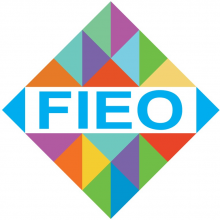
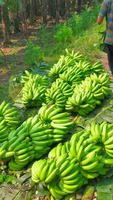

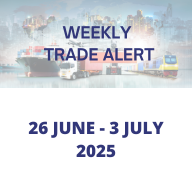
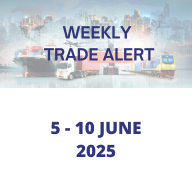
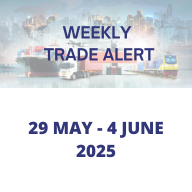

Comments (2)
Share this content
Please login or Register to join the discussion